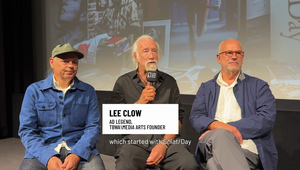
Effectiveness: Step By Step

The road to hell may be paved with good intentions, but the road to effectiveness is paved with, well, sort of woolly intentions. W+K Planner Oscar Powell takes Laura Swinton through the essential steps of building a solid foundation for an effective campaign.
LBB> In your experience, what are the key ingredients that make an effective advertising campaign?
OP> First, and perhaps most importantly, it’s important to define what we mean by ‘effectiveness’ and how we approach each project we take on. It begins with the brief, of course — stating clearly and precisely exactly what the business problem is that we’re trying to solve. This sounds obvious, but we’re not just setting out to create great work; we’re here to serve our client’s needs.
That’s the first bit. Next up is proper planning: understanding who we’re talking to, but also the search for something that can flip everything on its head and force the magic-makers in the building to look at the problem differently. We believe effective advertising starts with a point of view: something that the brand believes about the world — a stake in the ground, something to fight for.
Lastly, you need those magic-makers - the creatives, to go nuts, to make people feel, to tell a story that does something for people — not just in their heads but in their hearts as well. It doesn’t matter how good the planning is, without this emotion, people won’t be moved and the advertising will be mediocre and ultimately, ineffective.
LBB> What sort of measures do you use to assess advertising campaign effectiveness - does it always come back to increased sales or should it be considered in broader terms??
OP> All metrics can be segmented into three areas: outputs, outtakes and outcomes.
Outputs are the core campaign performance numbers achieved: reach, frequency, views, awareness… that kind of thing.
Outtakes are perceptual or attitudinal shifts associated with a campaign: for example brand preference moving from X to Y.
Finally, outcomes are the tangible business effects achieved: sales shifts, market share and so forth.
The reality is that there is no one metric silver bullet. The three areas above are intrinsically linked, and to achieve a genuinely useful understanding of performance, you need to analyse across the board.
High awareness is nothing without a positive business result. Similarly, a great business performance without an understanding of how it was achieved is not particularly useful, either to learn from or to build on in the future.
LBB> How important are social media metrics? Is volume enough?
OP> Likes / tweets and so on, sit in ‘outputs’ – which on their own, are little more than indicators of real success, in their reach, frequency and impact. Of course, they carry a small endorsement, but in a socially saturated world these endorsements aren’t exactly scarce or requiring any significant effort from an individual. They also help increase the old media metrics of reach and frequency (earned media isn’t a bad thing). So whilst they’re nice to have, look great on case-studies and may provide some useful benefit in the future if harnessed in the right way (an engaged community?); by-and-large, the chasing of these metrics as primary measures of success is a short-term vanity project.
LBB> How do you see the relationship between creativity and effectiveness? Is there a tension there or are the two simply different sides of the same coin?
OP> Wieden+Kennedy believe that the two are inextricably linked. The most effective work in the world is often the most creative and vice versa.
Great creativity drives great businesses. It’s as simple as that.















